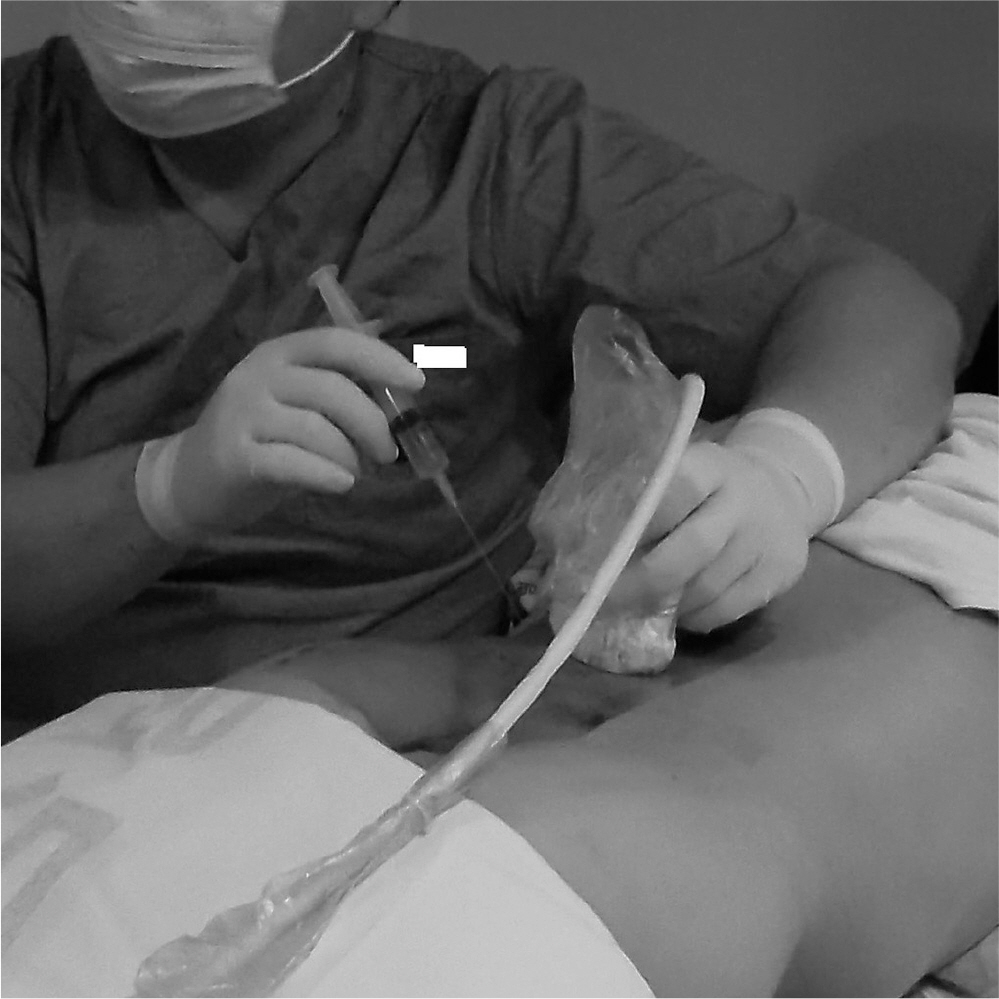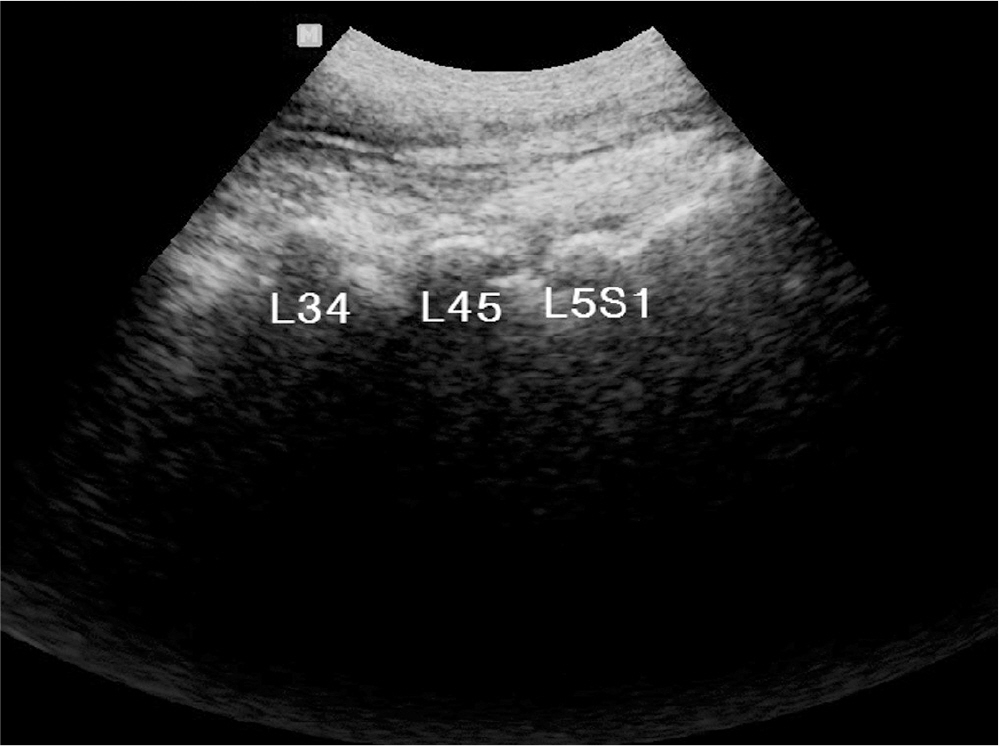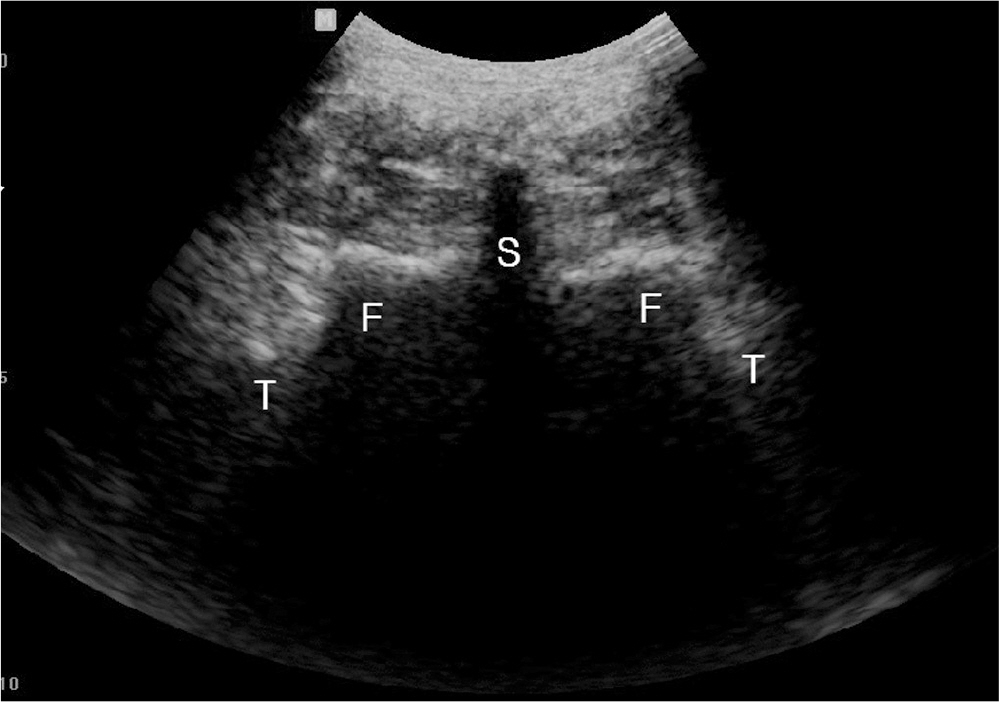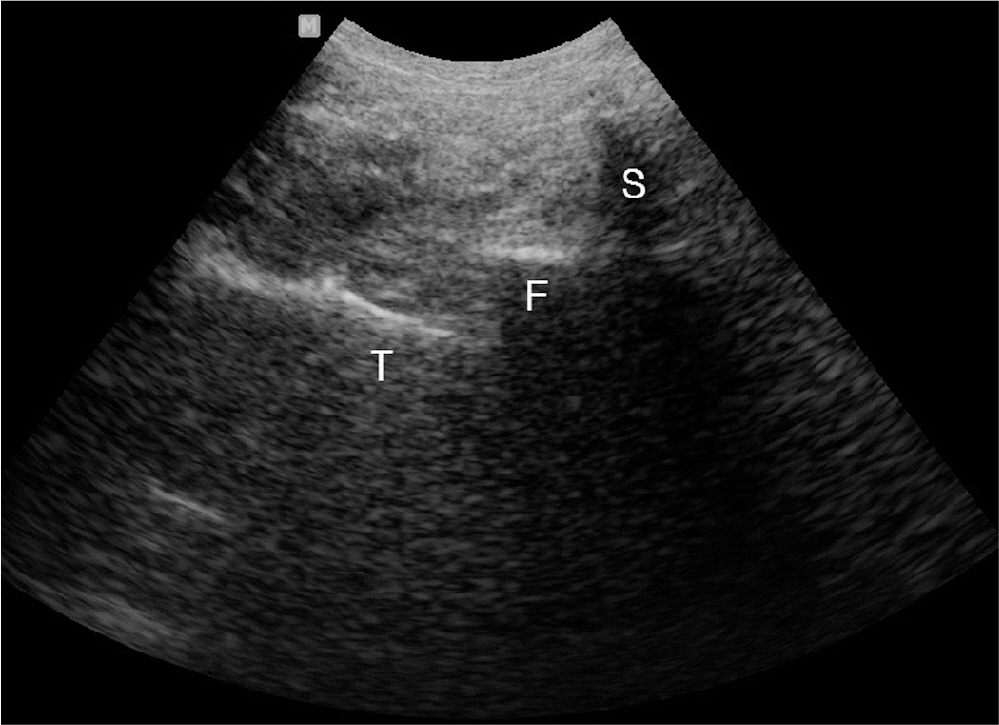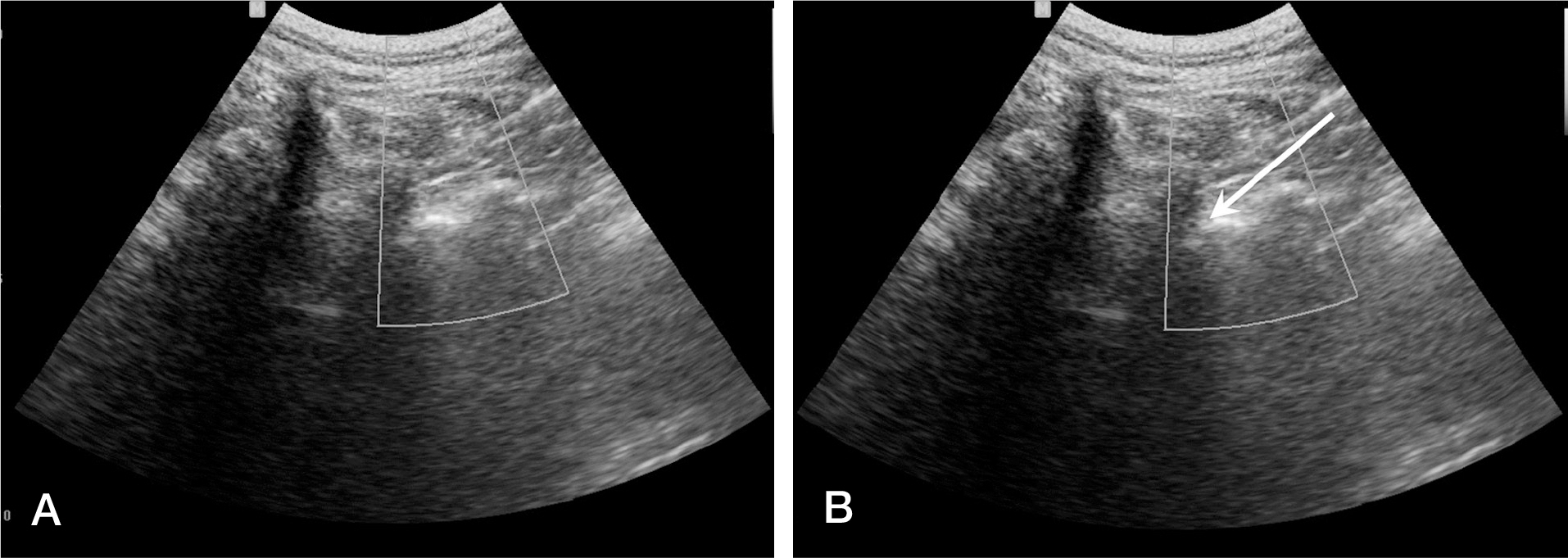J Korean Soc Spine Surg.
2014 Mar;21(1):48-55. 10.4184/jkss.2014.21.1.48.
Comparison of Lidocaine and Bupivacaine in Lumbar Medial Branch Block
- Affiliations
-
- 1Department of Orthopedic Surgery, Seoul Sacred Heart General Hospital, Seoul, Korea. msh124@paran.com
- 2Yonsei Jin Pain Clinic, Seoul, Korea.
- KMID: 1840417
- DOI: http://doi.org/10.4184/jkss.2014.21.1.48
Abstract
- STUDY DESIGN: This is a retrospective clinical study.
OBJECTIVES
To compare the efficacy of lidocaine and bupivacaine for the ultrasound-guided lumbar medial branch block in chronic low back pain. SUMMARY OF LITERATURE REVIEW: There is no study for comparison of the efficacy between lidocaine and bupivacaine for the medial branch block.
MATERIALS AND METHODS
From August 2011 to May 2013, 186 patients were assigned 0.5% lidocaine(n=136) or 0.25% bupivacaine(n=45) for the ultrasound-guided lumbar medial branch block. All procedures have been performed by the same operator, and 23G, 10 cm needle was placed and drug was injected under ultrasound guide. To target medial branches from lumbar spinal nerve, the groove at the root of transverse process and the base of superior articular process has been identified on transverse scan. Patients were evaluated by pre- and post-interventional(1 hour) Visual Analog Scale and analyzed statistically.
RESULTS
Reduction of VAS score in bupivacaine group is significantly greater than that in lidocaine group and post-interventional VAS score in bupivacaine group is significantly lower than that in lidocaine group through analysis of covariance test with adjusted pre-interventional VAS score. In multivariate analysis, while age, sex and treatment level were not significant factors, pre-interventional VAS score and the kind of drug were significant factors. Severe pain before treatment and bupivacaine was indicator of better result. Bupivacaine group reduced pain score in the VAS 2.285 more than lidocaine group with adjustment with other factors.
CONCLUSIONS
Bupivacaine is more effective than lidocaine in the reduction of pain after ultrasound-guided lumbar medial branch blocks in posterior facet joint syndrome.
Keyword
MeSH Terms
Figure
Reference
-
1. Uematsu S, Udvarhelyi GB, Benson DW, Siebens AA. Percutaneous radiofrequency rhizotomy. Surg Neurol. 1974; 2:319–25.2. Shealy CN. Percutaneous radiofrequency denervation of spinal facets. Treatment for chronic back pain and sciatica. J Neurosurg. 1975; 43:448–51.3. Moon SH, Lee S, Kim KH, Rho JH, Kim JH, Jung WS. Effect of ultrasound-guided lumbar medial branch block in chronic low back pain. J of Korean Orthopaedic Research Society. 2012; 15:54–61.4. Cohen SP, Strassels SA, Kurihara C, et al. Randomized study assessing the accuracy of cervical facet joint nerve (medial branch) blocks using different injectate volumes. Anesthesiology. 2010; 112:144–52.
Article5. Thorburn J, Moir DD. Bupivacaine toxicity in association with extradural analgesia for caesarean section. Br J Anaesth. 1984; 56:551–3.
Article6. Gould DB, Aldrete JA. Bupivacaine cardiotoxicity in a patient with renal failure. Acta Anaesthesiol Scand. 1983; 27:18–21.7. Buffington CW. The magnitude and duration of direct myocardial depression following intracoronary local anesthetics: a comparison of lidocaine and bupivacaine. Anesthesiology. 1989; 70:280–7.8. Strichartz GR, Sanchez V, Arthur GR, Chafetz R, Martin D. Fundamental properties of local anesthetics. II. Mea-sured octanol: buffer partition coefficients and pKa values of clinically used drugs. Anesth Analg. 1990; 71:158–70.9. Wildsmith JA, Brown DT, Paul D, Johnson S. Structure-activity relationships in differential nerve block at high and low frequency stimulation. Br J Anaesth. 1989; 63:444–52.
Article10. Scholz A. Mechanisms of (local) anaesthetics on voltage-gated sodium and other ion channels. Br J Anaesth. 2002; 89:52–61.
Article11. Ibusuki S, Katsuki H, Takasaki M. The effects of extracellular pH with and without bicarbonate on intracel-lular procaine concentrations and anesthetic effects in crayfish giant axons. Anesthesiology. 1998; 88:1549–57.
Article12. Cohen SP, Raja SN. Pathogenesis, diagnosis, and treatment of lumbar zygapophysial (facet) joint pain. Anesthesiology. 2007; 106:591–614.
Article13. Manchikanti L, Singh V, Falco FJ, et al. Evaluation of lumbar facet joint nerve blocks in managing chronic low back pain: a randomized, double-blind, controlled trial with a 2-year followup. Int J Med Sci. 2010; 7:124–35.
Article14. Alhelail M, Al-Salamah M, Al-Mulhim M, Al-Ha-mid S. Comparison of bupivaaine and lidocaine with epinephrine for digital nerve blocks. Emerg Med J. 2009; 26:347–50.15. Chu CR, Izzo NJ, Papas NE, Fu FH. In vitro exposure to 0.5% bupivacaine is cytotoxic to bovine articular chon-drocytes. Arthroscopy. 2006; 22:693–9.
Article16. Gomoll AH, Yanke AB, Kang RW, et al. Longterm effects of bupivacaine on cartilage in a rabbit shoulder model. Am J Sports Med. 2009; 37:72–7.
Article17. Lehner C, Gehwolf R, Hirzinger C, et al. Bupivacaine induces short-term alterations and impairment in rat tendons. Am J Sports Med. 2013; 41:1411–8.
Article18. Gomoll AH, Kang RW, Williams JM, Bach BR, Cole BJ. Chondrolysis after continuous intra-articular bupivacaine infusion: an experimental model investigating chondrotoxicity in the rabbit shoulder. Arthroscopy. 2006; 22:813–9.
Article19. Padera R, Bellas E, Tse JY, Hao D, Kohane DS. Local myotoxicity from sustained release of bupivacaine from microparticles. Anesthesiology. 2008; 108:921–8.
Article
- Full Text Links
- Actions
-
Cited
- CITED
-
- Close
- Share
- Similar articles
-
- Determination of the False Positive Rate of Uncontrolled Diagnostic Block for Lumbar Medial Branch of Dorsal Rami
- Spermatic Cord Block Anesthesia for Scrotal Surgery
- Study on the Spermatic cord Block in Intrascrotal Surgery
- Comparison of Lidocaine , Bupivacaine and Lidocaine - Bupivacaine Mixture for Epidural Blockade for Cesarean Section
- The Comparision of Three Local Anesthetics for The Stellate Ganglion Block in Sudden Deafness Patient

